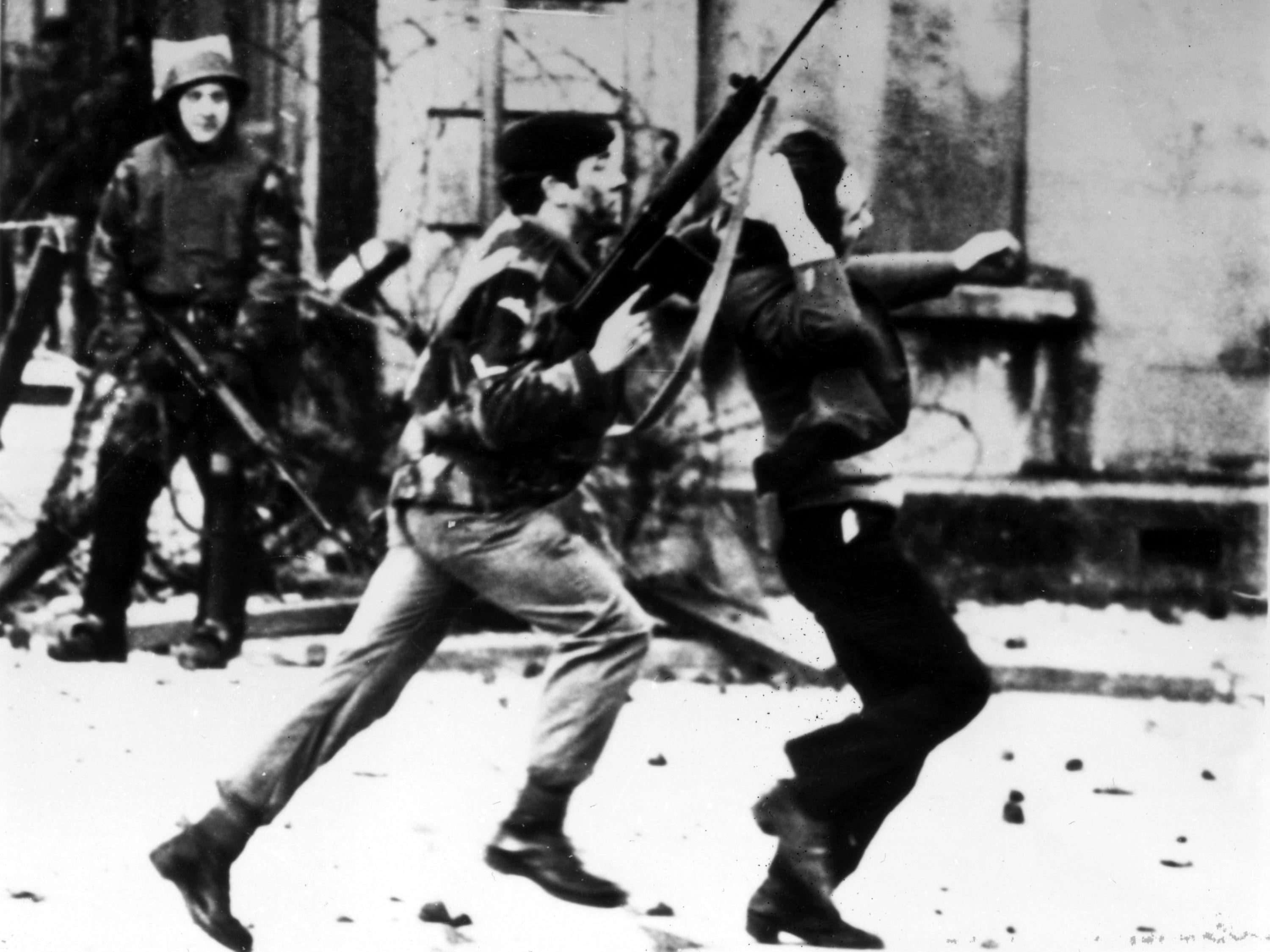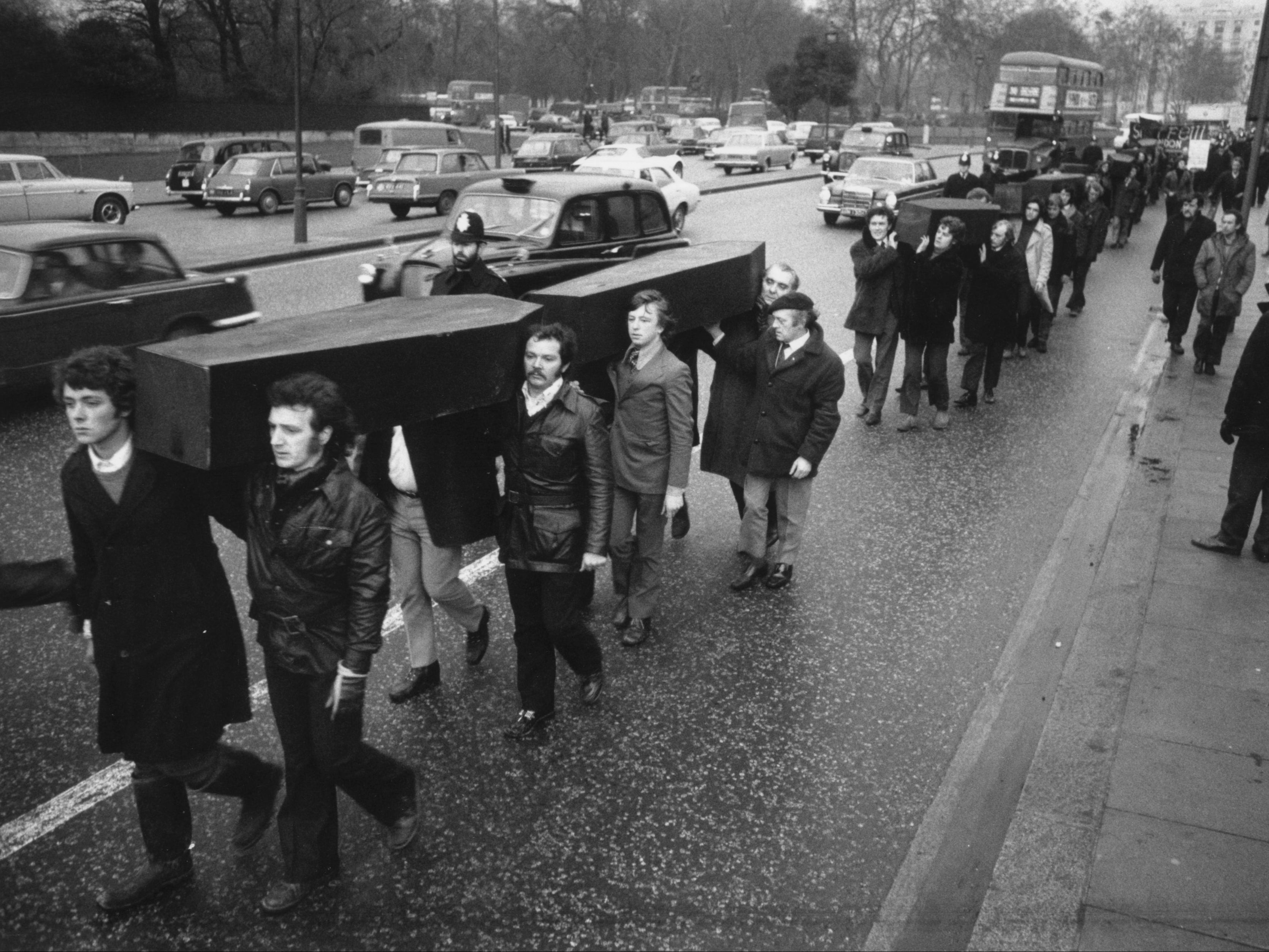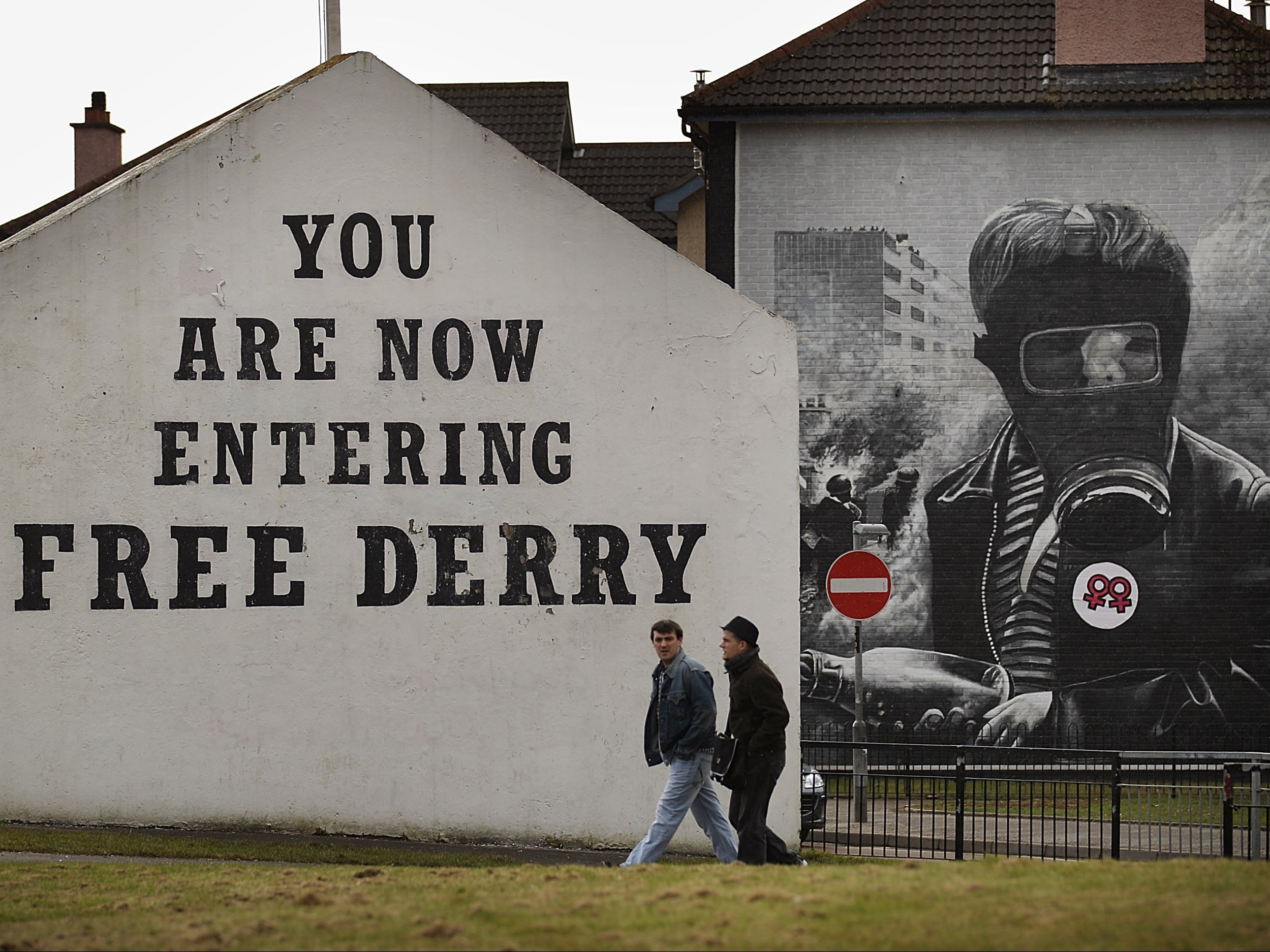Bloody Sunday: What happened on 30 January 1972 and what did the Saville Inquiry conclude in 2010?
Mass shooting of Catholic demonstrators in Derry by British paratroopers, perhaps the defining episode of the Troubles, remembered 50 years on

Your support helps us to tell the story
From reproductive rights to climate change to Big Tech, The Independent is on the ground when the story is developing. Whether it's investigating the financials of Elon Musk's pro-Trump PAC or producing our latest documentary, 'The A Word', which shines a light on the American women fighting for reproductive rights, we know how important it is to parse out the facts from the messaging.
At such a critical moment in US history, we need reporters on the ground. Your donation allows us to keep sending journalists to speak to both sides of the story.
The Independent is trusted by Americans across the entire political spectrum. And unlike many other quality news outlets, we choose not to lock Americans out of our reporting and analysis with paywalls. We believe quality journalism should be available to everyone, paid for by those who can afford it.
Your support makes all the difference.This weekend marks the 50th anniversary of Bloody Sunday, one of the darkest days and defining episodes of the Troubles in which 13 people were shot dead by British soldiers in the streets of Derry.
The infamous events of 30 January 1972 began at 2.45pm when approximately 15,000 mostly Catholic marchers convened at Bishop’s Field in the Creggan area of the city to take part in a demonstration organised by the Northern Ireland Civil Rights Association to protest the internment policy introduced the previous August, which empowered the British Army to imprison suspected IRA members without trial in response to escalating violence.
Fierce opposition to the policy had only brought more bloodshed that summer, not least the deaths of 11 civilians in Belfast in what became known as the Ballymurphy Massacre and the murder of British bombardier Paul Challenor by a Provisional IRA sniper, also in Creggan, the first of seven soldiers killed in Derry before the year was out.
Gatherings as large as that which assembled on the same housing estate on 30 January to denounce internment had been prohibited by Northern Irish prime minister Brian Faulkner from Stormont 12 days earlier but the marchers amassed undeterred and duly set off for the city centre, with the British troops called in to keep the peace looking on.
En route to Guildhall Square, the participants found their planned route along William Street blocked.
While most of the marchers were redirected along Rossville Street towards the Free Derry Corner monument in the Bogside, some stayed where they were to confront the soldiers manning the William Street barricade.
As tensions threatened to boil over, an Army water cannon was used to disperse the crowd while stones, bricks, bottles and other projectiles were thrown, prompting members of the 1st Battalion, Parachute Regiment, the same force caught up in Ballymurphy, to respond with rubber bullets and CS gas.
The first shots are believed to have been fired at 3.55pm and, at approximately 4.07pm, the paratroopers advanced on foot and in armoured vehicles to make arrests as the demonstrators began to retreat into the Bogside.
Between 4.10pm and 4.40pm, 21 troops fired on the demonstrators, ultimately discharging 108 live rounds in total, according to the British Army’s own record, the hail of bullets leaving 13 marchers dead and at least 15 others badly injured, one of whom would pass away in hospital four months later.
The victims would later be named as Patrick Doherty, Gerald Donaghey, John Duddy, Hugh Gilmour, Michael Kelly, Michael McDaid, Kevin McElhinney, Bernard McGuigan, Gerard McKinney, William McKinney, William Nash, James Wray and John Young.
Seven of the 13 were still in their teens.
A photograph of Catholic priest Edward Daly waving a blood-stained white handkerchief of surrender as he attempted to lead the mortally wounded Duddy to safety was just one of many shocking images to capture the horror.
In the days that followed Bloody Sunday, British home secretary Reginald Maulding maintained that the soldiers had merely “returned the fire directed at them” from gun and nail bomb attacks by suspected IRA men.
The Ministry of Defence released the Army’s version of events, in which it was insisted that: “Throughout the fighting that ensued, the Army fired only at identified targets - at attacking gunmen and bombers. At all times the soldiers obeyed their standing instructions to fire only in self-defence or in defence of others threatened.”
That position would be vehemently disputed by eyewitnesses at the scene like Father Daly.
On 1 February, prime minister Ted Heath ordered a public inquiry into what had transpired, appointing his lord chief justice, Lord Widgery, to the task.
As funerals were held for 11 of the dead in Creggan a day later, an astonishing 90 per cent of labouring men in Dublin stopped work out of respect.
Later, the British embassy in Merrion Square in the Irish capital was burned to the ground with petrol bombs by demonstrators seeking retribution and bearing coffins and black flags.

Following a fact-finding mission to Coleraine in which 114 witnesses were interviewed, it took the Widgery Tribunal just ten weeks to assemble its final report.
It was published on 18 April and concluded that the actions of British forces had been “bordering on the reckless” but otherwise largely exonerated them, an outcome that saw it branded a “whitewash” that had only provoked further fury.
By contrast, Derry’s city coroner, retired British Army major Hubert O’Neill, said at an inquest into the massacre on 21 August 1973: “This Sunday became known as Bloody Sunday and bloody it was. It was quite unnecessary. It strikes me that the Army ran amok that day and shot without thinking what they were doing. They were shooting innocent people. These people may have been taking part in a march that was banned but that does not justify the troops coming in and firing live rounds indiscriminately. I would say without hesitation that it was sheer, unadulterated murder. It was murder.”
After 36 years of campaigning on behalf of the aggrieved families of the bereaved, a second investigation was finally commissioned by Tony Blair on 29 January 1998 under Lord Saville of Newdigate.
Twelve years later, the latter’s 5,000-page, 10-volume report at last arrived, making it the longest-running inquiry in British legal history and coming at a cost of around £191m.
It concluded that none of the slain had been armed or done anything to pose a serious threat or to justify their killing and that they were given no warning by the soldiers before the shooting commenced.
Lord Saville did find that there was “some firing by republican paramilitaries” but placed the blame for the tragedy largely with the British Army.
He said there was “no evidence” to suggest that the killings had been carried out with the encouragement of either the British government or the unionist-dominated Northern Ireland administration of the time.
As for the Army’s then-commander of land forces, Major General Robert Ford, Lord Saville questioned his decision to deploy the 1st Battalion to Derry in light of the regiment’s “reputation for using excessive physical violence” but concluded that Major General Ford “neither knew nor had reason to know at any stage that his decision would or was likely to result in soldiers firing unjustifiably on that day”.
He was more critical of the actions of individual men on the ground - notably one Soldier F, accused of killing between four to six marchers - saying there had been “a serious and widespread loss of discipline among the soldiers” while acknowledging that an order to advance issued by Lieutenant Colonel Derek Wilford (awarded an OBE in the New Year’s Honours List of 1973) had further added to the chaos.
“There was thus no separation between peaceful marchers and those who had been rioting and no means whereby soldiers could identify and arrest only the latter,” his report said of that instruction.
On the subsequent conduct of the paratroopers involved in Bloody Sunday, Lord Saville wrote: “Many of these soldiers have knowingly put forward false accounts in order to seek to justify their firing.”

With the Saville Inquiry over, Britain’s new prime minister David Cameron duly offered a formal public apology to the people of Northern Ireland.
Speaking on 15 June 2010 in the House of Commons, Mr Cameron said that, although he himself was “deeply patriotic” and reluctant to believe the worst of Britain, the verdict Lord Saville had delivered was “absolutely clear”.
“What happened on Bloody Sunday was both unjustified and unjustifiable. It was wrong,” he said. “The government is ultimately responsible for the conduct of the armed forces, and for that, on behalf of the government and on behalf of the country, I am deeply sorry.”
He added that the order for troops to enter the Bogside “should not have been given” and that the casualties were caused by soldiers “losing their self control”.
Crowds had gathered to watch his statement on screens erected especially for the purpose outside of Derry’s Guildhall.
A minute’s silence was held beforehand but cheers erupted when Mr Cameron spoke and a copy of the loathed Widgery Report was torn up by one of the families’ representatives.
Following the publication of the Saville Report, the Police Service of Northern Ireland’s Legacy Investigation Branch commenced a murder probe based on its conclusions, ultimately handing over 125,000 pages of material to the Public Prosecution Service (PPS) in late 2016.
It was duly announced in March 2019 that the aforementioned Soldier F would face prosecution for the murders of James Wray and William McKinney and be charged with the attempted murders of Patrick O’Donnell, Joseph Friel, Joe Mahon and Michael Quinn.
However, the PPS subsequently abandoned the case on 21 July 2021 after “careful consideration” led them to conclude that statements collected in 1972 would not be regarded as admissible evidence, a bitter blow for relatives still seeking justice for the atrocity that was Bloody Sunday.


